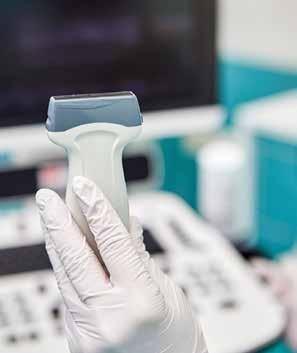AAEM/RSA RESIDENT JOURNAL REVIEW
Early Vasopressor Use in Septic Shock: What Do We Know? John Harringa, MD; Zachary Wynne, MD; Akilesh Honasoge, MD; and Samantha Yarmis, MD Editors: Kami M. Hu, MD FAAEM FACEP and Kelly Maurelus MD FAAEM
Clinical Questions 1. How do outcomes compare when vasopressors are administered earlier in the course of septic shock? 2. Are rates of adverse events such as acute kidney injury, new-onset arrhythmia, or pulmonary edema higher when vasopressors are administered earlier?
Introduction Sepsis is a complex disease state with multiple pathophysiological considerations. In particular, we know that hypotension in septic shock is due not only to hypovolemia in the setting of poor intake and insensible losses, but also profound vasoplegia related to widespread release of inflammatory mediators.1 While fluid administration alongside early antibiotics remains a mainstay of treatment in septic shock, as there is evidence that excess fluid is harmful,2-5 many clinicians have thus wondered if earlier administration of vasoactive medications may help to more comprehensively address the disease process. Several articles have explored this important question in recent years.
Permpikul C, Tongyoo S, Viarasilpa T, et al. Early Use of Norepinephrine in Septic Shock Resuscitation (CENSER). A Randomized Trial. Am J Respir Crit Care Med. 2019;199(9):1097-1105. doi:10.1164/rccm.201806-1034OC A number of studies have explored the utility of early norepinephrine administration in septic shock, but most have been retrospective in nature. The CENSER investigators sought to address a paucity of prospective data regarding the efficacy of early norepinephrine administration in improving outcomes in septic shock by way of a single-center, randomized, double-blind placebo-controlled trial. Patients carrying a diagnosis of sepsis with hypotension were randomized to receive either norepinephrine or placebo in addition to standard care. Adults aged 18 or older presenting to the ED with a mean arterial pressure (MAP) <65 and infection as the suspected cause were eligible for enrollment, while those with septic shock for ≥1 hour prior to randomization, those with CVA, ACS, acute pulmonary edema, status asthmaticus, active arrythmias, active GI hemorrhage, pregnancy, seizure, drug overdose, burn injury, trauma, requirement of immediate surgery, or advanced-stage cancer were excluded. Both drug (norepinephrine in 5% dextrose) and placebo (5% dextrose) were administered at a fixed rate of 0.05 mcg/kg/min for 24 hours. If the hemodynamic goal of MAP ≥65 mmHg was not met after a 30 mL/ kg fluid bolus and study drug infusion, open-label vasopressors were permitted. Overall, 456 hypotensive patients were screened, and 320
52
COMMON SENSE JANUARY/FEBRUARY 2021
patients met inclusion criteria and were randomized. Ten patients revoked consent at a later time (seven and three in the study and control groups, respectively). The intention-to-treat principle was used in final analysis, and outcomes were assessed prospectively. Shock control was defined as MAP ≥65 mmHg with urine flow ≥0.5 ml/kg/hr for two consecutive hours or serum lactate decreased by ≥10% from baseline within 6 hours. Randomization was effective, with well-matched arms in terms of demographics and disease severity. There was no difference between groups in time from diagnosis to study intervention, nor in time to open label-NE use. With respect to the primary outcome, shock control was significantly improved in the early NE group (76.1 vs 48.4%, p<0.001) with a shorter median time to MAP goal (3:30 vs 4:45h:m, p<0.001). Mortality at 28 days trended towards a decrease in the intervention group but did not meet statistical significance (15.5% vs 21.9%, p=0.15). Open label NE was used in a higher proportion of control-group patients (80% vs 67.7%). Total volume of IV fluids administered and ICU admission rates were similar between groups, with subgroup analyses revealing significantly decreased rates of both cardiogenic pulmonary edema and newonset arrythmias in the early-NE group. Interestingly, though patients in the early NE group received higher median NE dosage during hours 2-5 after diagnosis, the overall NE dosage did not differ between groups at 6 hours. This study found that earlier administration of NE was associated with an increase in and more rapid achievement of shock control, but not 28-day mortality. The authors posited that the decrease in rate of cardiac arrhythmias may be related to improved cardiac output with decreased oxygen demand secondary to shorter shock duration. Despite these encouraging results the authors advised caution, noting that additional research is important prior to at-large adoption of this practice and that safety of early NE administration relative to lower incidence of congestive heart failure and new-onset arrhythmia awaits confirmation through future research. Study limitations include the limited generalizability of a single ED study population in Thailand, inadequate power to detect a mortality difference, and the inability to mask the effect of NE (i.e. rapid blood pressure increases in the experimental arm could have clued in physicians to the treatment arm). Of note, up to 20% of control-arm patients had similar increases. It remains that the results of this trial are encouraging with respect to early NE administration and warrant further prospective investigation.
Bai X, Yu W, Ji W, et al. Early versus delayed administration of norepinephrine in patients with septic shock. Crit Care Lond Engl. 2014;18(5):532.
>>























